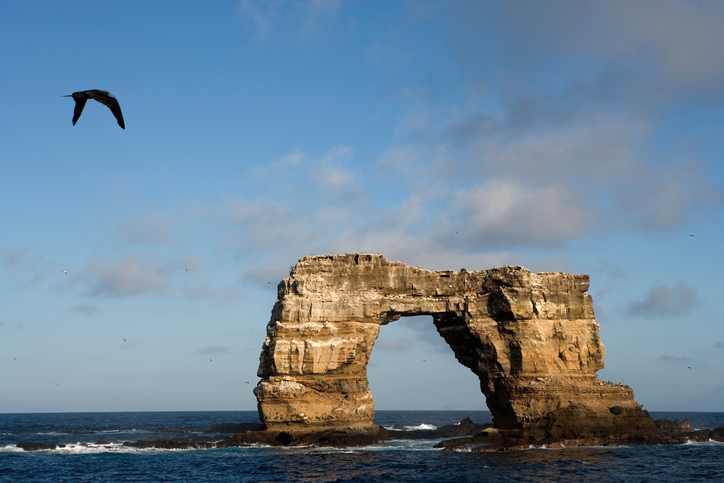The Galapagos Islands’ Darwin’s Arch has collapsed into the Pacific Ocean. According to Smithsonian Magazine, the natural rock arch, which stood at a height of 141 feet, has now become two pillars, which have already been dubbed “The Pillars of Evolution” or “Darwin’s Pillars.”
The iconic arch was found less than a mile from Darwin Island, an island situated 600 miles west of Ecuador. The island and its neighboring arch were named for biologist and naturalist Charles Darwin, who formulated his evolutionist theories and ideas about natural selection based upon observations he made while visiting the Galápagos Islands in 1835.
Shaped over time by wind and water erosion, Ecuador’s Ministry of Environment has explained that the collapse of the arch also occurred due to natural erosion.
Climate change has left the Galápagos Islands at an increased risk for erosion. Located at the intersection of three different ocean currents, the islands are affected by rising temperatures of the Pacific caused by the El Niño weather pattern.
A group of tourists with the Aggressor Adventures group witnessed the fall of the arch at around 11:20 a.m. when it “collapsed in front of their eyes.” The arch has been popular among photographers and scuba divers hoping to catch a glimpse of dolphins, sharks, and other species of sea creatures.
In fact, the Galápagos Islands have been designated a UNESCO World Heritage Site due to of its biodiversity in marine life. Landings on the arch were not allowed, and it could be reached only by boat.
In a statement made on its Facebook account, the Galápagos Conservancy said, “The beauty of nature lies not in its permanence, but in its constant transformation. Galápagos, more than any other place on Earth, is a symbol of evolution and change, so although we are saddened to lose this iconic structure due to natural erosion, it is a reminder of the power of nature’s architecture and the need to preserve wild places while we still can.





